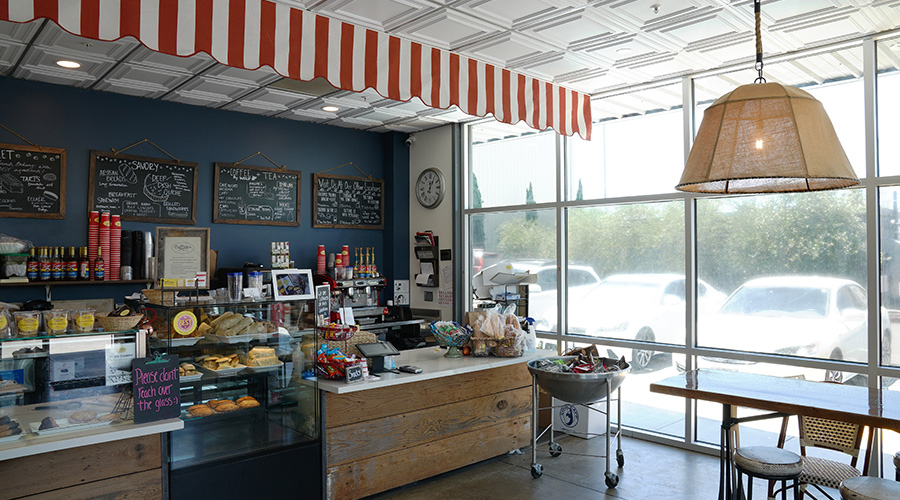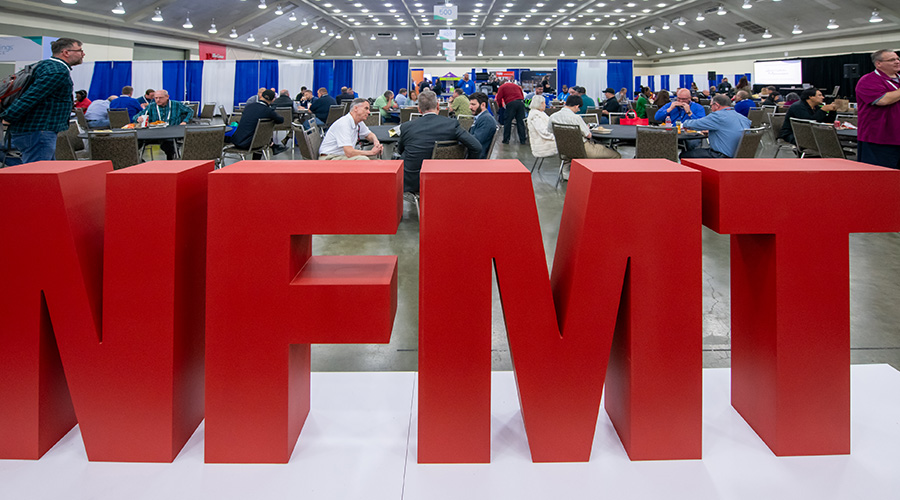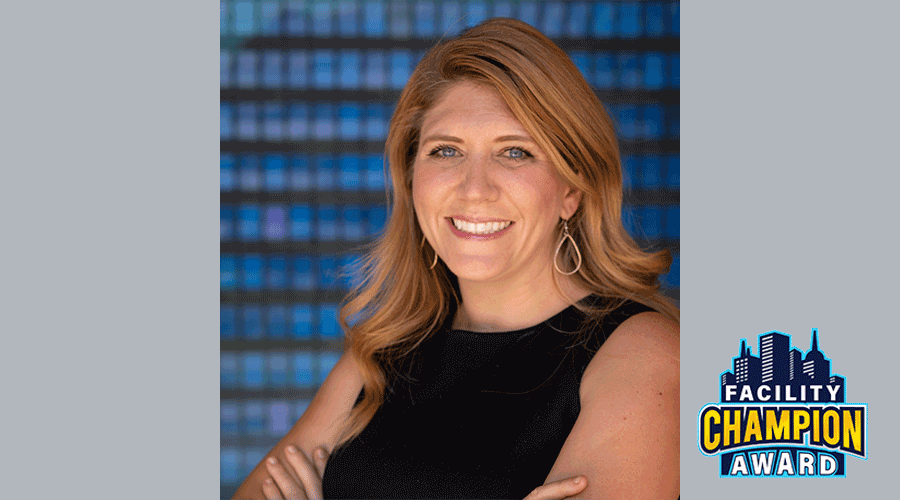
Costeaux Bakery in Airport Selects Ceiling Tiles for Appearance and Stability
The bakery’s prior tiles had a habit of being displaced by wind gusts. October 4, 2024
Branching out a business requires strong branding. For a Northern California bakery with a 100-year heritage in the community, creating a successful new satellite store meant recapturing the feel and ambience of their original location. The new site at a regional airport was a sparse, modern building – a far cry from the century-old downtown storefront and restaurant – but it was transformed with the judicious application of white and blue paint, rustic wood moldings and furniture, a red-striped awning and a traditional decorative ceiling made of Ceilume thermoformed tiles.
Old and New
Healdsburg, California is in the Sonoma County wine country, a region that has also gained a reputation for great food. The store has been a bakery since it was built over a century ago and has become a beloved institution. Proprietorship changed hands many times over the decades, but under the name Costeaux Bakery, it has been owned and operated by the same family for over 40 years and has become a fixture in the community. In 2018, they decided to create a satellite bakery at the nearby Sonoma County airport, Costeaux on the Go, where travelers could grab a quick bite or a carry-on meal, and locals-in-the-know could come for a morning coffee. The 900-square-foot space occupies half of a small commercial building attached to the side of an airplane hangar.
The challenge was to make the bland space recognizably Costeaux. The original bakery had high ceilings, plain plaster walls, and exposed rough-hewn wood columns and beams. The new space is a moderately low-ceilinged, modern room with two all-glass walls and a suspended grid ceiling.
The key was understanding what the Costeaux atmosphere is made of. Interior designer Gina Gattuso of Myra Hoefer Design had worked with Costeaux on previous projects and knows their brand well.
The red striped awning that hangs indoors over the food counter echoes the awning over the front door of the original bakery. The marble countertops and the chalkboards high on the wall also recall the style of the downtown store. The outdoor-café style chairs are shared with other Costeaux locations, and the round tabletops are giant yellow Costeaux labels.
Gattuso notes that they needed a non-commercial look overall, “more authentic café style,” and the ceiling was an important element of that. The rest of the building’s retail spaces all have flat white mineral fiber tile ceilings, and neither bakery owner nor designer was willing to settle for that.
Costeaux CEO Will Seppi felt that “it was important to pick out something that was complementary to the design and not just have a flat look, something to fit in with our brand and our theme, playing into our French heritage.”
Gina Gattuso was familiar with Ceilume thermoformed decorative ceilings from previous projects, and picked out a pattern called Stratford, in white, to add style and European flavor. She liked its similarity to classic stamped-tin ceilings. Stratford tiles are available in both two-by-two and two-by-four sizes, so Costeaux was able to match the room’s two-by-four grid.
Problem Solved
Seppi and his team liked the resulting look very much, but a problem developed that was specific to the location.
“We ended up having issues that had to do with the air movement,” Seppi says. “When the doors were opened, tiles popped up and fell out.”
The location is subject to very windy conditions generally, usually at the most severe during the Fall. When the front door was opened, a stiff gust of wind could come into the store with enough force to lift some of the lightweight tiles out of position. When the wind was cut off and the tiles settled back, they sometimes fell out of the grid. There were also sudden air-pressure shifts in the bakery space when the doors of the adjacent hangar were opened.
Seppi struggled with the falling ceiling tiles for several years. They tried adding some common flat mineral fiber tiles on top of their decorative ceiling, to weigh down the tiles, but certain positions in the grid still fell out. They tried to tape them in place. Nothing worked. The one thing they did not try to do was to contact the manufacturer for help.
Fortunately, the manufacturer, Ceilume, was located just 14 miles away, and Ceilume found them. A company executive was getting a pre-flight coffee, saw the problem, and started a discussion in the factory about getting it fixed.
Ceilume proposed a re-design of the ceiling, replacing the lightweight Stratford panels with Cambridge, a style that is very similar in appearance, but twice the thickness and approved for use as refacing panels, where they are installed below mineral fiber panels.
In addition, an air grate was added to help equalize pressure above and below the ceiling, light fixtures were centered within panels for a better appearance, and a few more mineral fiber tiles were added above, in places where they had previously been absent. This solution was executed with help from the factory, and it worked completely. Seppi reports no further problems with tiles lifting up in a strong gust.
Next
Read next on FacilitiesNet












